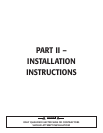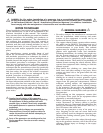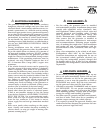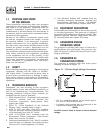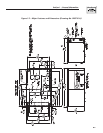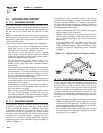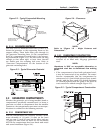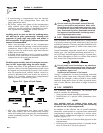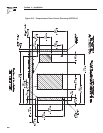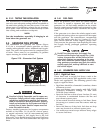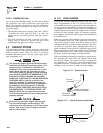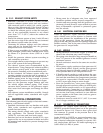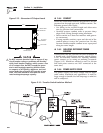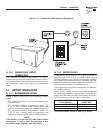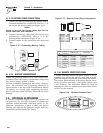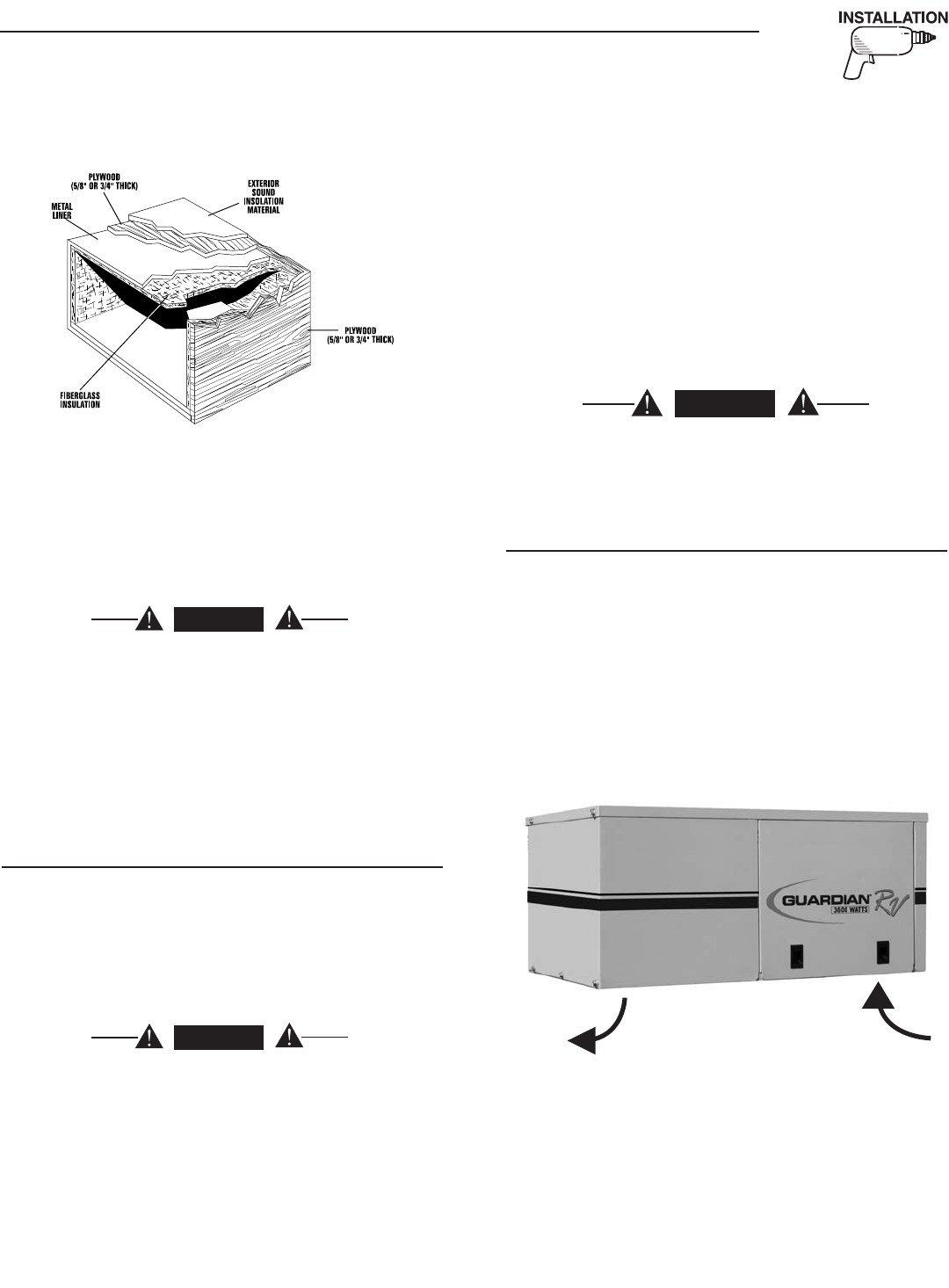
25
Figure 2.7 – Typical Noise Abatement
Line the compartment interior walls and floor, as •
well as the underside of the floor, with 26-gauge
galvanized steel.
Vapor seal all compartment seams and joints.•
Over the galvanized steel lining, install a combi-•
nation of acoustical materials as mentioned in
"Sound Insulating Materials".
DANGER
To prevent fire or explosion, do not install any
insulation or other absorbent materials on the
interior or underside of the compartment floor.
Seal all compartment door edges to prevent noise •
leakage around the door perimeter.
Line the compartment door interior (except for air •
openings) with suitable, fireproof sound insulation
(such as 1-inch (25 mm) thick fiberglass with a 2-
pound density).
2.2.5 COMPARTMENT FLOOR CUTOUTS
Provide openings in the generator compartment for
the following items (Figure 2.8 on page 26):
Engine exhaust and cooling air outlets•
Generator cooling air inlet•
Four holes for passage of generator mounting bolts •
(see "Generator Restraint").
DANGER
Fuel lines and exhaust piping must not pen-
etrate into the vehicle living area.
2.3 COOLING AND VENTILATING AIR
It is absolutely essential that an adequate flow of
air for cooling, ventilating and engine combustion
be supplied to the generator set. Without sufficient
airflow, the engine/generator quickly overheats. Such
overheating can cause serious operating difficulties
and also may cause fire and personal injury. The
installer must make sure that sufficient air is avail-
able to the generator for cooling, ventilating and
combustion. The installer also must provide for a
path for exhausting the cooling air to the exterior of a
compartment, if so equipped.
DANGER
Never use discharged cooling air for heating or
permit such air to enter the vehicle interior. This
air contains deadly carbon monoxide gas and
other poisonous, flammable or explosive gases.
2.3.1 GENERATOR AIRFLOW
Engine operation drives cooling fans for the two-stage
cooling air system. A pressure fan draws cooling air
into the bottom right side of the generator (Figure 2.9).
This airflow cools the engine/generator and electronic
components. The second part of the cooling system, a
suction fan, draws air that is heated from a hot engine
into a collector compartment at the left side of the unit.
This heated air (although cooler than exhaust muffler)
is then deflected out the bottom toward the ground.
Figure 2.9 – Airflow Through Engine/Generator
Section 2 – Installation
Recreational Vehicle Generator



